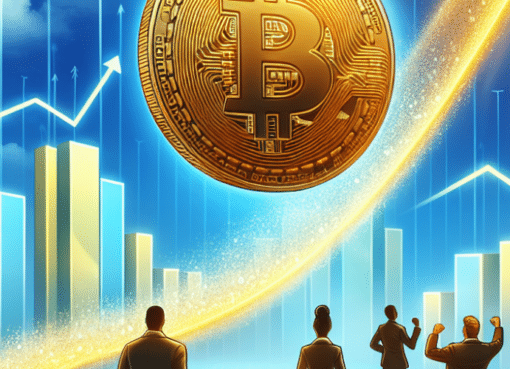In a dramatic turn of events that has sent shockwaves through the cryptocurrency market, one of the world’s largest crypto trading platforms, GlobalCoinX, announced an immediate suspension of all cryptocurrency withdrawals. Citing what it described as “unprecedented liquidity pressures,” the decision marks a significant moment in the ongoing volatility of the digital currency realm.
GlobalCoinX, known for its robust trading systems and a wide array of supported cryptocurrencies, including Bitcoin, Ethereum, and Ripple, has been a pivotal player in the cryptocurrency exchange market. Today’s suspension highlights the fragile nature of digital finance ecosystems, particularly in times of market stress.
The Ripple Effect on Investors and the Market
The immediate impact of the withdrawal freeze was felt across the market as cryptocurrency prices tumbled. Bitcoin, the leading cryptocurrency, saw a drop of 7% within hours of the announcement. Similarly, Ethereum fell by about 5.5%. This reaction underscores the interconnectedness of global crypto markets and the panic that can ensue from uncertainties at major exchanges.
Investors, many of whom rely on GlobalCoinX’s platform for daily trading, were left in limbo. Forums and social media platforms were abuzz with speculation and concerns about the broader implications of the exchange’s financial health. The withdrawal halt has not only caused a liquidity scare but has also sparked discussions about the robustness of financial management practices within major crypto platforms.
Behind the Liquidity Crisis
While the specific details of the liquidity issues remain unclear, experts speculate that a combination of large withdrawal requests and a recent downturn in trading volumes may have depleted the reserves of the exchange. Additionally, potential regulatory challenges in various jurisdictions could have exacerbated the situation, leading to a temporary halt in operations.
The CEO of GlobalCoinX, Jonathan Smith, issued a statement assuring users that the decision to halt withdrawals was a “necessary temporary measure to ensure the stability and integrity of our platform while we work to address these challenges.” He also promised that the team is actively working on a resolution plan and will update users accordingly.
The Regulatory Angle and Future Implications
This incident has ignited a fresh debate around the need for more stringent regulatory frameworks for cryptocurrency exchanges. The volatile nature of digital currencies combined with the decentralized aspect of transactions has always posed regulatory challenges. However, incidents like these further the argument for a standardized oversight mechanism to protect user interests.
“As cryptocurrency becomes more integrated with traditional finance, the need for clear regulatory guidelines becomes even more critical,” stated financial analyst Lisa Hart. “It’s not just about protecting investors but also about ensuring the stability of the broader financial ecosystem.”
The current crisis at GlobalCoinX could also potentially lead to more rigorous KYC (Know Your Customer) and AML (Anti-Money Laundering) checks. These measures might help prevent such situations in the future but could also affect the liquidity and freedom that form part of the core appeals of cryptocurrencies.
Looking Ahead
The long-term impact of GlobalCoinX’s withdrawal freeze on the cryptocurrency market remains to be seen. If the exchange manages to resolve its liquidity issues swiftly, the damage might be limited. However, prolonged problems could lead to decreased trust in centralized crypto exchanges, potentially accelerating the shift towards decentralized platforms.
Investors are advised to stay informed and consider the security and liquidity profiles of exchanges before committing significant capital. Additionally, diversifying one’s investment portfolio to include both crypto and more traditional assets could mitigate risk in turbulent times.
As the situation unfolds, all eyes will be on GlobalCoinX’s next move – will it manage to navigate through the crisis, or will it become a cautionary tale in the annals of digital finance?




